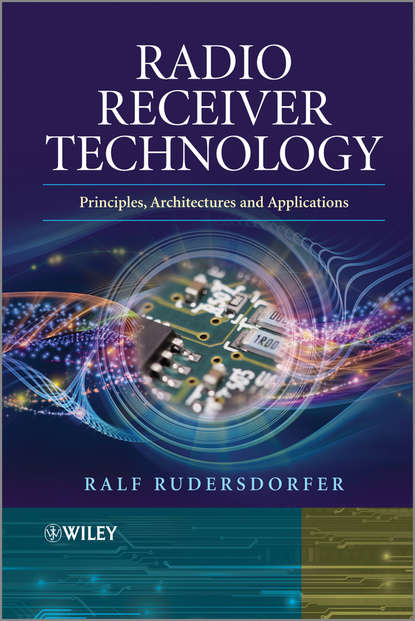
Radio Receiver Technology. Principles, Architectures and Applications скачать fb2
Ralf Rudersdorfer - Radio Receiver Technology. Principles, Architectures and Applications краткое содержание
Written by an expert in the field, this book covers the principles, architectures, applications, specifications and characterizations of radio receivers In this book, the author introduces the reader to the basic principles and theories of present-day communications receiver technology. The first section of the book presents realization concepts at the system level, taking into consideration the various types of users. Details of the circuitry are described providing the reader with an understanding of fully digitized radio receivers, offering an insight into the state-of-the-art. The remaining sections address radio receivers, particularly as two-port devices. Furthermore, the author outlines the fields of applications (with sample calculations and with reference to practical work) and their features and considers also the specialty of high-quality radio receivers. As can be seen from the multitude of terrestrial applications described in Part II, they are typically used for radio surveillance, signal intelligence, modern radio bearing and at the classical radio services. Parts III and IV describe the entire range of parameters that are useful for the characterization of these receivers. The description starts from the physical effect, or the explanation of the individual parameter, and then proceeds to the measuring technique for determining the parameters, highlighting problems, followed by explanatory notes with applicatory relevance. The measuring procedures described are the result of experiences gained in extended laboratory work and practical testing. With the model shown in Part IV, used for the operational evaluation detailing the intrinsic small range of interpretation, the book covers untreated research in the field. The Appendix provides among others valuable information about the dimensioning of receiving systems and the mathematical derivation of non-linear effects and as well as a useful method for converting different level specifications. Key Features: Introduces the basic principles and theories of present-day technology Discusses concepts at system level (aligned to the various types of users) Addresses (fully) digitized radio receivers focusing on the state-of-the-art Close contacts to the industry were utilized to show background information Enables the reader to comprehend and evaluate the characteristic features and the performance of such systems Examines the entire range of parameters that are characteristic of the technology including the physical effect and measuring techniques Includes results of experiences gained in extended laboratory work and practical testing with examples Provides a uniform and systematic approach for ease of understanding e.g. many didactic figures for the visual illustration have been newly created as well as complete real-world examples This book will be an excellent resource to understand the principles of work, for professionals developing and testing radio receivers, for receiver users (e.g. at regulatory agencies, surveillance centers, secret services, classical radio communications services), technicians, engineers and technicians who work with RF-measurement instruments, postgraduate students studying in the field and university lecturers. Chartered radio amateurs and handlers/operators will also find this book insightful. Due to high level of detail, it also serves as a reference. By using the carefully edited alphabetical index with over 1,200 entries, the appropriate explanations can be found quickly in the text.
Чтобы оставить свою оценку и/или комментарий, Вам нужно войти под своей учетной записью или зарегистрироваться



